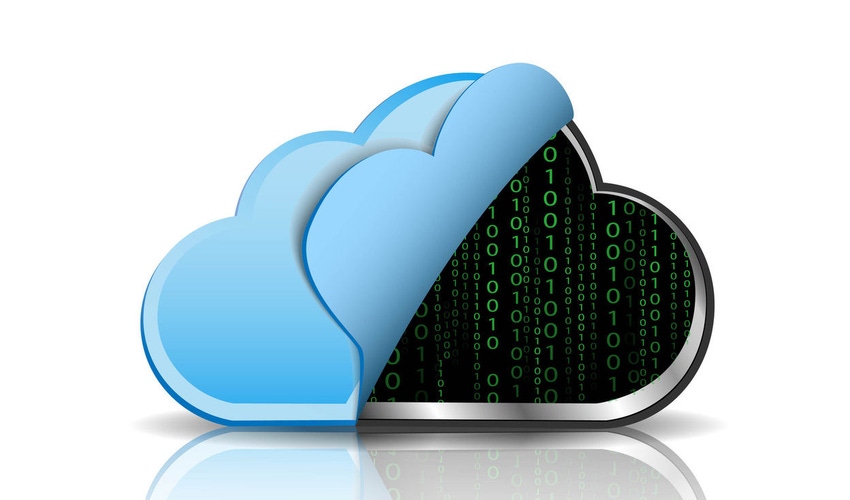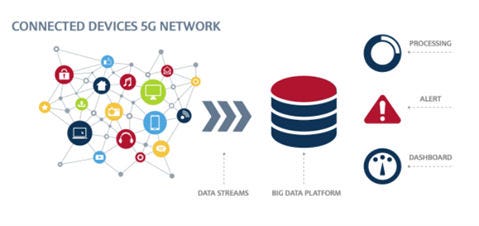Ingestion will be critical to unlocking the full potential of IoT over 5G. The ingestion of data is the process of gathering, importing, and processing data for later or immediate use, or storage in a database.
September 7, 2016

Telecoms.com periodically invites opinion from third party experts on subjects addressing the most important areas of today’s industry. In this post Tugdual Grall, technical evangelist at MapR, examines the critical role of the cloud in the next major communications era.
The billions of connected devices in use today already produce an abundance of data – from robotics, to wearables, to internet-connected homeware. But in a few short years, 5G networks will be introduced into our everyday lives and the possibilities for the Internet of Things (IoT) will only be limited by our imaginations.
Is IoT ready for 5G?
IoT is defined by Gartner as “the network of physical objects that contain embedded technology to communicate and sense or interact with their internal states or the external environment.” The explosion of disruptive technologies in the past couple of years means that IoT is already part of our everyday lives, in both the workplace and at home, with around 13 billion connected devices already in use today.
This number is set to increase by huge proportions, as Gartner predicts that the amount of connected devices in use worldwide will reach a staggering 20.8 billion by 2020. This means that around 5.5 million new devices are set to connect every day in 2016 alone, promising to generate huge volumes of data.
Sensors within connected devices and M2M (machine to machine) communications have been the catalysts for this explosion of data – they have been designed for scale and the ability to support an enormous number of devices. But with 5G just around the corner, promising to deliver data at higher speeds than ever before, you can bet that this quantity of sensory data will increase on an exponential scale.
5G describes the next generation of wireless networks, which are projected to reach speeds at least ten times faster than the current 4G network. 5G is currently a concept however every technology company in the industry has set its sights on playing a key role in its development.
The first 5G networks could be ready for commercial rollout by 2020, and many firms are already showcasing prototypes and demos of its capabilities. Nokia, for example, is working on developing a new standard stating that it hopes to finalise the technology behind 5G as early as 2018.
Recent field-trials demonstrate that 5G will impact the entire mobile network and associated eco-system, from devices and into the cloud. Let’s not forget that 5G was very much the star of the show at Mobile World Congress 2016, with companies such as Ericsson and Samsung showcasing a number of new 5G related technologies. During a live demo, Ericsson 5G radio prototypes used Multi-User MIMO (multiple-input and multiple-output) to transmit data to several user devices using the same time and frequency resources, increasing the system’s efficiency and reliability. Also, Samsung and Deutsche Telekom set up an impressive robot arm to demonstrate the benefits of low-latency 5G, which proved it was able to transmit small amounts of information in less than a millisecond.
Big data: Volume and velocity
While Big Data has been the centre of conversation for some time, we haven’t yet experienced anything like the volumes of data that IoT is set to produce over the next few years. The volume and velocity of data being transmitted in the near future is potentially limitless, while the limitations on collecting and moving it around the world are fast disappearing.
To maximise the value of this data, businesses must find effective ways to gather, store, and then analyse this data in real time. However the amount of data driven by 5G will bring significant challenges for IT department. IT will need to ensure their organisation’s infrastructure is prepared for the increased volume, variety and velocity of data being created. If organisations are to make best use of their new data streams, the driving factor will be the systems in place to manage data ingestion.
The ingestion question
Ingestion will be critical to unlocking the full potential of IoT over 5G. The ingestion of data is the process of gathering, importing, and processing data for later or immediate use, or storage in a database.
The speed at which data is processed will be particularly crucial for IoT applications, such as automotive, robotic and healthcare devices. For example, an internet-connected car that is required to make real time decisions will need data to be gathered and processed for immediate use. Using a converged data platform that is capable of handling billions of messages a second will ensure that data is ingested at the speed required for mission-critical services. A converged data platform is not only able to handle this sub-second transactional data, but also historical information as well, whether it’s in the cloud, on premise, structured or unstructured. Iteratively building artificial intelligence models from all this data is part of the power of combining 5G and convergence.

Rich analytics
It becomes possible to perform rich analytics once the data has been captured and processed in the system. SQL is currently the most popular language for analytics due to its powerful language, but also because it is compliant with the analytics and reporting tools used by the majority of business users and developers.
Applying this to IoT, which produces data in different formats, the SQL engine must be able to deal with all the formats and also make good use of the power of the servers deployed in a cloud infrastructure. This is why cloud will be a key component in the success of IoT when it is running over a 5G network, as it provides enterprises with the ability to manage massive data flows from various data sources and, most importantly, extract value from them.
The 5G network future
5G is well and truly underway. As well as the prospect of being considerably faster than existing technologies, 5G holds the promise of creating a digital society and economy. It could potentially provide a massively compressed telecommunications infrastructure which integrates processing, storage, and networking into one system. However the full potential of IoT and 5G will only be realised if organisations make use of the cloud and big data.
 Tugdual Grall is Chief Technical Evangelist for EMEA at MapR, an open source advocate and a passionate developer. He currently works with the European developer communities to ease MapR, Hadoop and NoSQL adoption. Before joining MapR, Tug was Technical Evangelist at MongoDB and Couchbase. Tug has also worked as CTO at eXo Plaform and JavaEEproduct manager, and software engineer at Oracle. Tugdual is Co-Founder of the Nantes JUG (Java User Group) that holds since 2008 monthly meeting about Java ecosystem.
Tugdual Grall is Chief Technical Evangelist for EMEA at MapR, an open source advocate and a passionate developer. He currently works with the European developer communities to ease MapR, Hadoop and NoSQL adoption. Before joining MapR, Tug was Technical Evangelist at MongoDB and Couchbase. Tug has also worked as CTO at eXo Plaform and JavaEEproduct manager, and software engineer at Oracle. Tugdual is Co-Founder of the Nantes JUG (Java User Group) that holds since 2008 monthly meeting about Java ecosystem.
Read more about:
DiscussionAbout the Author(s)
You May Also Like








.png?width=300&auto=webp&quality=80&disable=upscale)


_1.jpg?width=300&auto=webp&quality=80&disable=upscale)


.png?width=800&auto=webp&quality=80&disable=upscale)